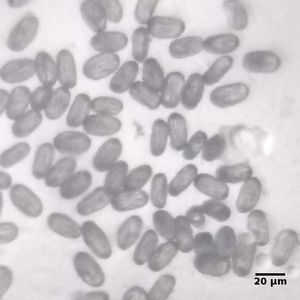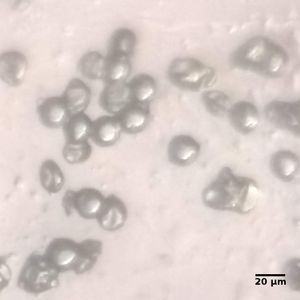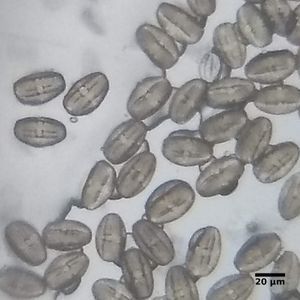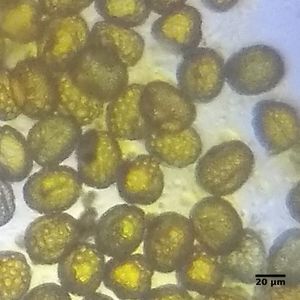Vazhaipoo pollen
 May 26, 2018 • 11:41 PM UTC
May 26, 2018 • 11:41 PM UTC Unknown Location
Unknown Location 140x Magnification
140x Magnification Microorganisms
Microorganisms
varuni
Learn about the author...
21posts
22comments
1locations
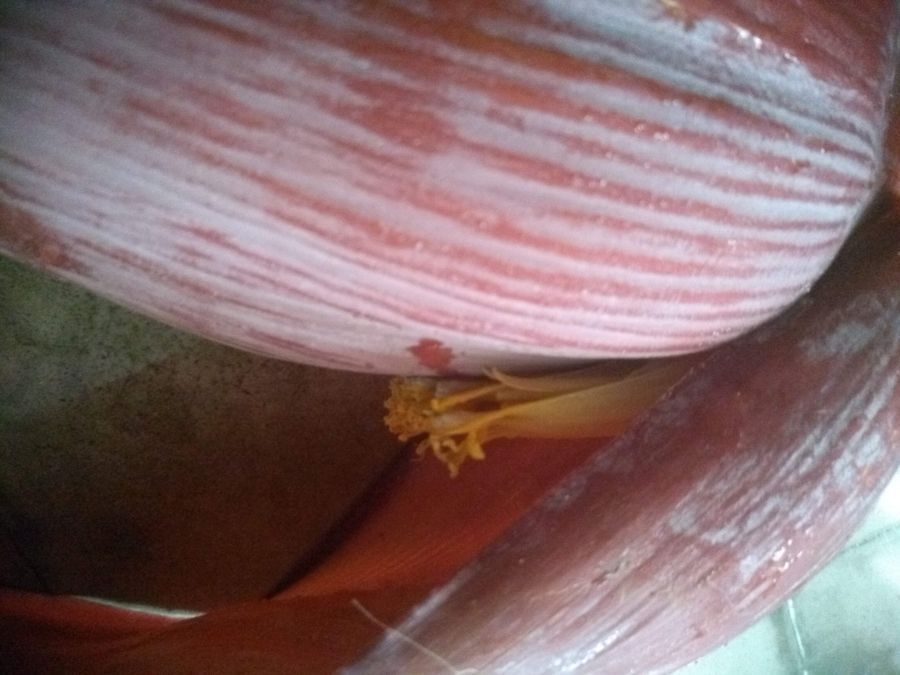
A friend of mine brought me a Vazhaipoo (banana flower) from his farm:
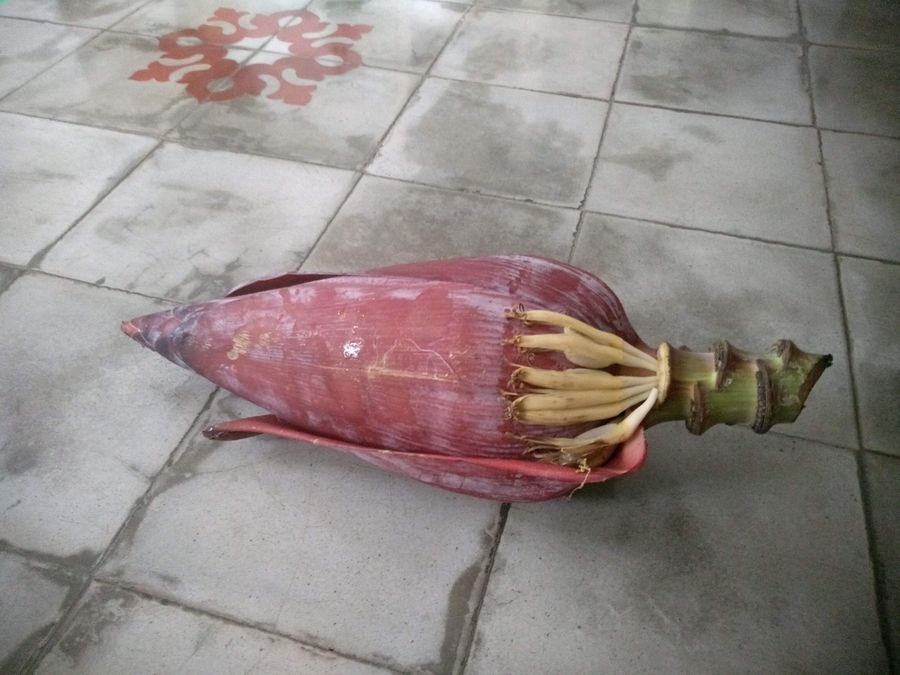
Here are a close up of the tiny florets:

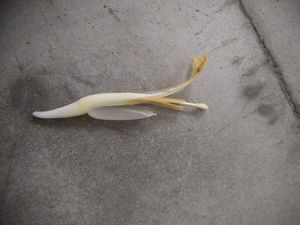
This is a delicacy in south Indian homes. Basically, you take each floret, remove the style/stigma (they are very fibrous) and the sepal like transparent thing. Then you can cook the florets. I’m convinced its mainly a delicacy because this cleaning process takes HOURS and no one wants to do that very often.
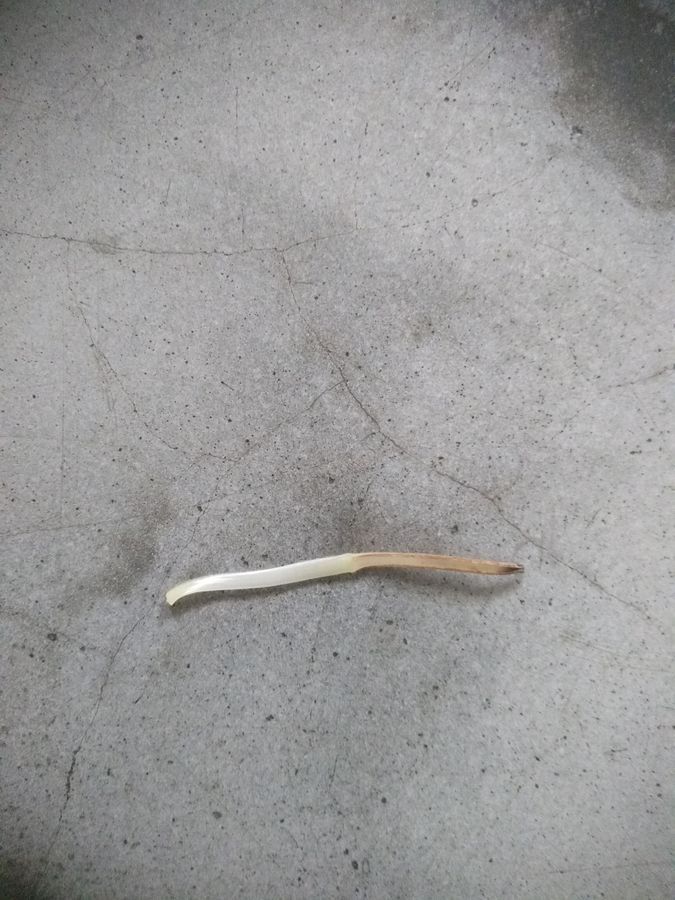
Here’s a stamen. I figured the pollen is somewhere on here so I just took this and dabbed it onto cello tape many times and then made a slide out of it.
Initially, the slide looked like it had nothing on it. But after a lot of searching I found what I think is banana pollen:
Initially, the slide looked like it had nothing on it. But after a lot of searching I found what I think is banana pollen:
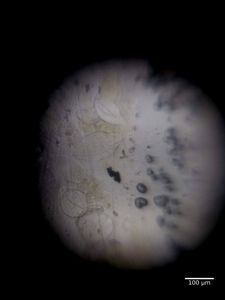
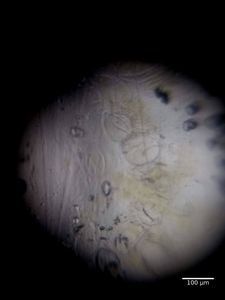
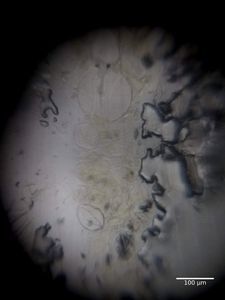
If you look closely, you see these round glassy things. I think these are banana pollen. It seems like it can be anywhere from 70 – 140 microns! Also, there wasn’t that much pollen.
Well, that was only the first set of florets — so maybe there will be more pollen in younger florets? (Also, I have to clean the rest of the vazhapoo before I can cook it!)
Well, that was only the first set of florets — so maybe there will be more pollen in younger florets? (Also, I have to clean the rest of the vazhapoo before I can cook it!)
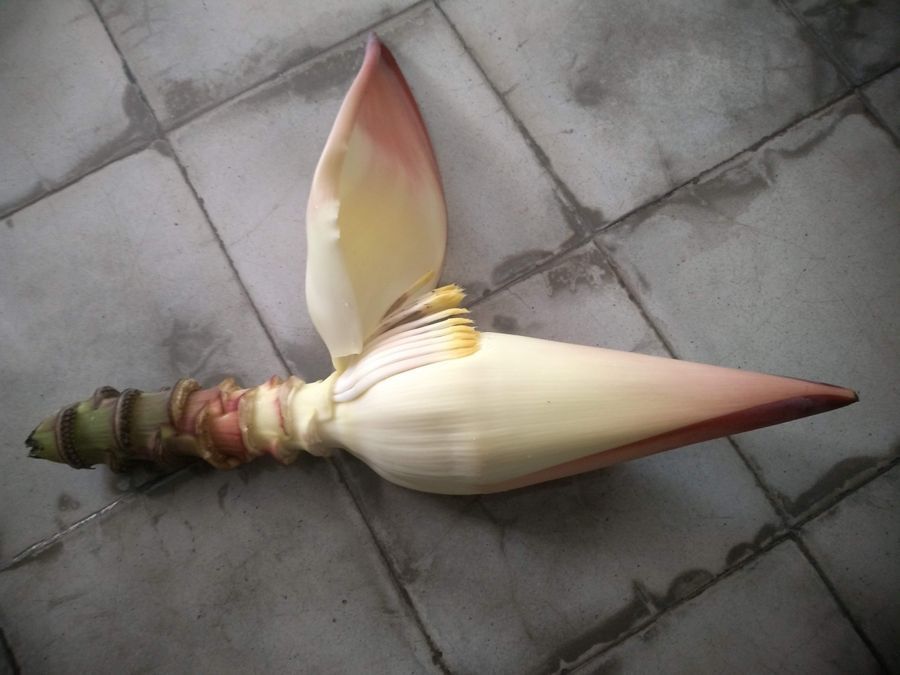
Every time I think I’m almost there I find a another set of slorets!
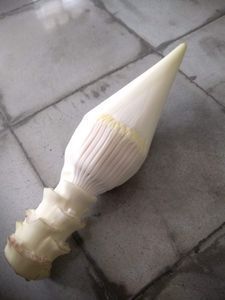
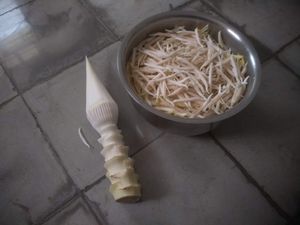
Anyway, here’s a what I saw on stamens from younger flowers (inner florets):
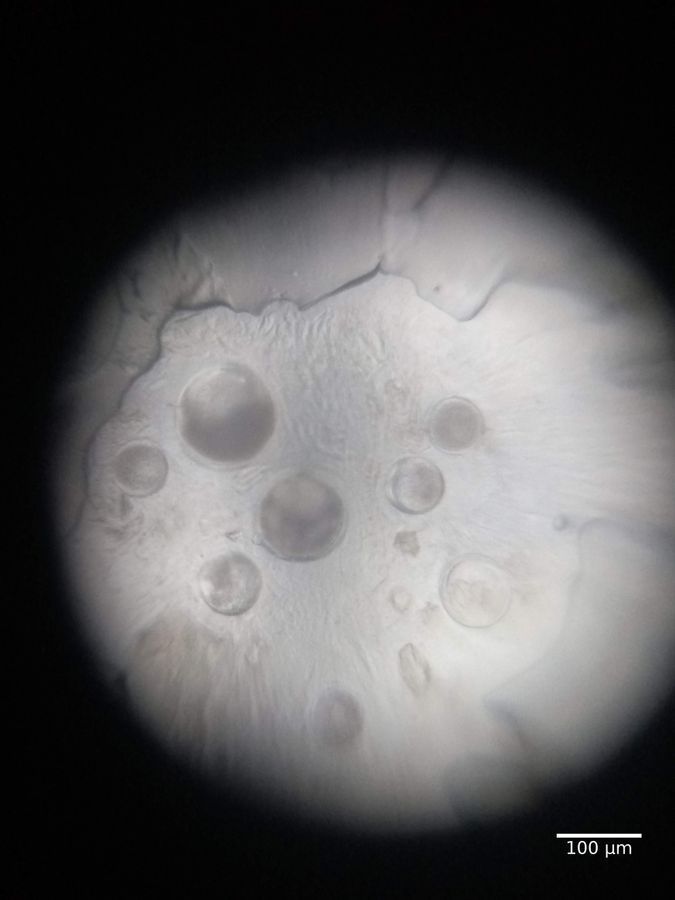
They look very different from the pollen from mature flowers — perhaps they are not quite pollen yet? Also, they are smaller: 60 – 110 microns.
The Scientific name for Banana is Musa . It’s part of a monocot group with a really fun name: Zingiberanae ! This group also includes things like Ginger. One of the characteristics of this group is that these plants have pollen grains without ‘distinctive’ apertures and a reduced outer coat (exine layer). (Also, ‘silica bodies’ in their cells — I’ll find find out more about this soon and post!)
Here they are the stamens and pollen side by side:
The Scientific name for Banana is Musa . It’s part of a monocot group with a really fun name: Zingiberanae ! This group also includes things like Ginger. One of the characteristics of this group is that these plants have pollen grains without ‘distinctive’ apertures and a reduced outer coat (exine layer). (Also, ‘silica bodies’ in their cells — I’ll find find out more about this soon and post!)
Here they are the stamens and pollen side by side:
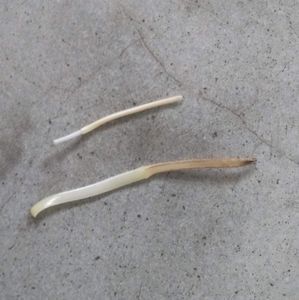
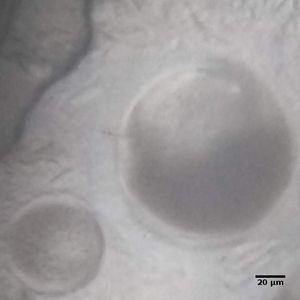
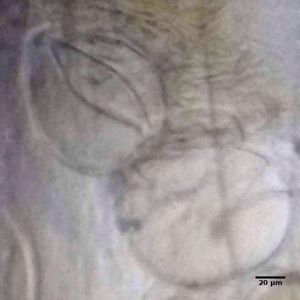
(Pollen images are 200×200 microns as described in a previous post .)
A couple of hours later, I had a yummy lunch of s amme , p arupu podi and Zingiberanae flowers:
A couple of hours later, I had a yummy lunch of s amme , p arupu podi and Zingiberanae flowers:
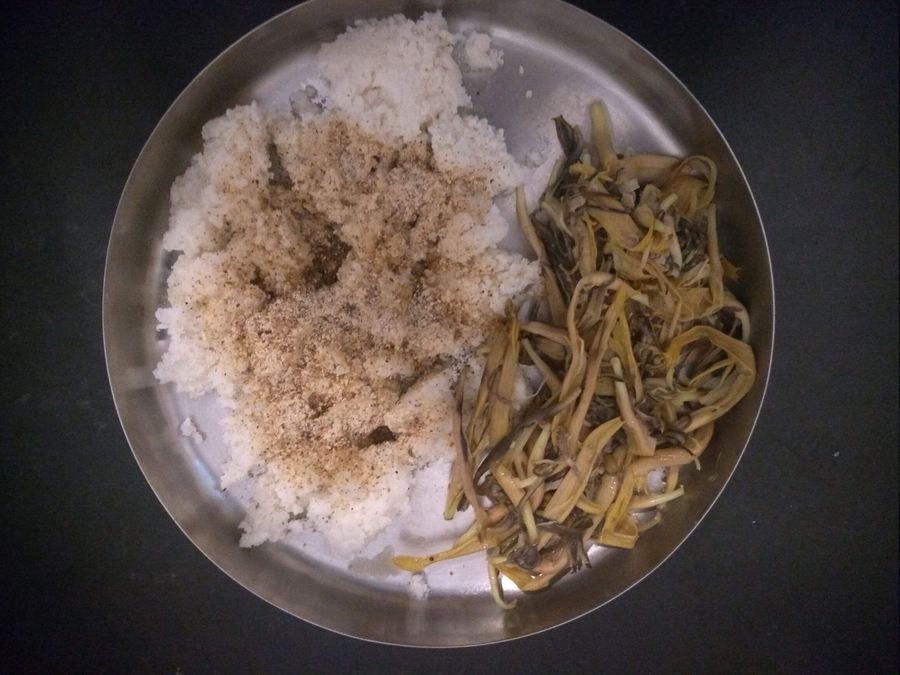
Sign in to commentNobody has commented yet... Share your thoughts with the author and start the discussion!
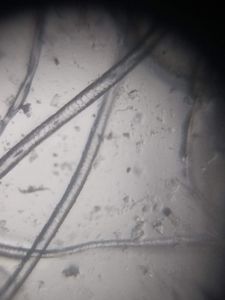
 0 Applause
0 Applause 0 Comments
0 Comments
